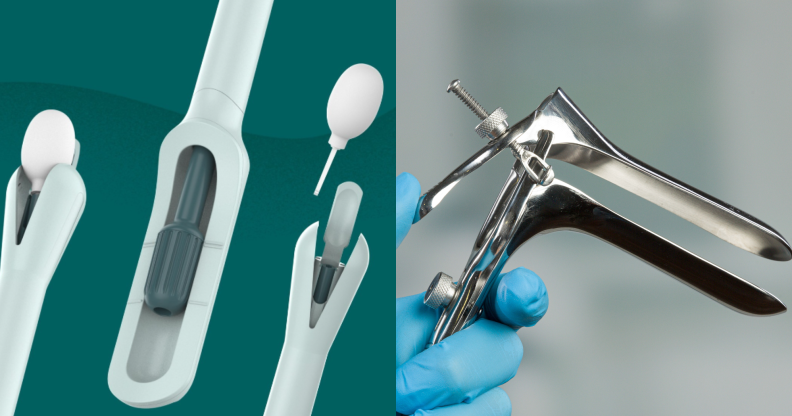The first at-home cervical screening device is under clinical trial

Until now, the speculum has not had a makeover since it was introduced in the 19th century. (@teal.health/Instagram/Getty)
The first at-home cervical screening device is currently under clinical trial to become FDA-approved in the USA, and we think it’s about time for a change.
For women and those with uteruses, undergoing a regular pap smear to prevent cervical cancer can be an unpleasant experience thanks to the speculum used.
The outdated device used in pelvic appointments to separate the vaginal walls can be cold and uncomfortable. The clamp-like instrument was invented in the mid-19th century and hasn’t adapted much since its origins.
The new device called Teal Wand, designed by women-led company Teal Health, is an at-home cervical cancer screening device. The brand explained in an Instagram post that the at-home screening device “follows the American Cancer Society’s cervical cancer guidelines and runs the samples on approved primary HPV assays”.
The brand also cites that one in four women are not up-to-date on their cervical screening, while 75% of women have more than one barrier to getting to a screening.
Teal Health’s initial study of the device revealed that 97% of women said the at-home cervical cancer screening device was easy or very easy to use. Meanwhile, 92% of participants said they would choose self-collect over the current standard of care with a clinician collecting, while 87% said they would be more likely to get screened if the Teal Wand was an option.
In the US, the Centres for Disease Control and Prevention estimates that around 4,000 women and people with uteruses die of cervical cancer a year. Self-collected cervical screening tests are already an option in other countries and actively reduce the barrier for women and LGBTQ+ people facing healthcare-based discrimination.
The Australian Government introduced such tests in July 2022. The home kit tests “allow privacy and help break down barriers for thousands of people who have never screened – including women who have experienced sexual violence, LGBTQIA+ people and culturally and linguistically diverse and First Nations communities”, the Department of Health and Aged Care website reads.
“Australia has always punched above its weight when it comes to cervical cancer, and now Australia is on track to be the first country in the world to eliminate this deadly disease,” said the assistant minister for the department The Hon Ged Kearney.
Unsurprisingly, the original device has bleak origins. In 1945, Dr James Marion Sims performed surgeries on enslaved women without anaesthesia or pain relief, in a bid to understand the reproductive system. He invented the instrument to allow himself – and largely Cis male doctors – the ability to better look at the vagina and cervix, GE HealthCare explains.






